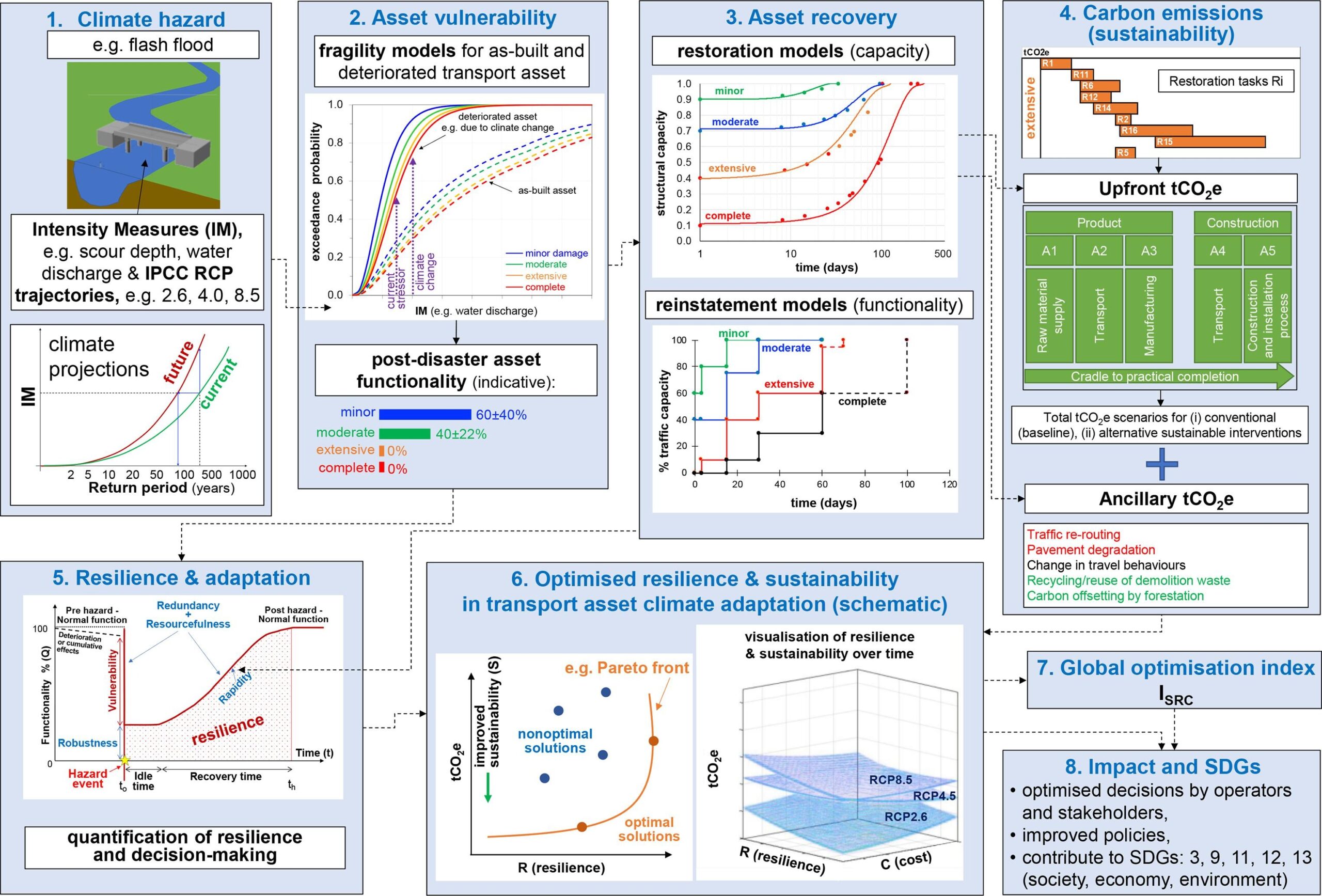Climate change poses significant challenges to the performance and recovery of transport infrastructure, particularly bridges, in the face of extreme events like floods. This study introduces a novel framework to optimize sustainability (measured by Greenhouse Gas emissions – GHG), resilience (measured by restoration time), and cost. The framework enables stakeholders to make informed decisions by quantifying trade-offs between these metrics and prioritizing recovery strategies for transport assets.

Key Highlights
- A global metric (ISRC) integrates sustainability, resilience, and cost for transport infrastructure recovery.
- Low-carbon restoration strategies demonstrated up to 50% improvement in ISRC compared to traditional methods.
- The study evaluates the impact of climate change projections on recovery strategies, showing how increased hazard intensities affect sustainability, resilience, and cost.
- Application of the framework on a bridge recovery case study quantifies the benefits of low-carbon materials and preventive maintenance.
Framework for Optimization
The framework quantifies sustainability, resilience, and cost through a step-by-step process:
- Hazard Intensity Assessment: Analyzing climate projections and hazard scenarios (e.g., floods) to predict impacts on infrastructure.
- Fragility Modeling: Estimating the vulnerability of assets under varying hazard intensities.
- Recovery Modeling: Evaluating restoration times and traffic reinstatement based on damage levels.
- Sustainability Analysis: Assessing GHG emissions (tCO2e) from materials, construction processes, and traffic detours.
- Resilience Quantification: Measuring the ability of the infrastructure to recover functionality after hazards.
- Cost Assessment: Calculating the financial implications of different recovery strategies.
- Optimization: Using multi-criteria decision-making to balance sustainability, resilience, and cost metrics.
Case Study: Bridge Recovery

A river-crossing bridge subjected to nine flood scenarios was analyzed to compare traditional and low-carbon restoration strategies. Key findings include:
- Sustainability Gains: Low-carbon materials (e.g., recycled steel, fly-ash concrete) reduced GHG emissions by 50%-60% for certain restoration tasks.
- Resilience Benefits: Preventive maintenance (ex-ante adaptation) resulted in faster recovery times and higher resilience compared to reactive measures (ex-post recovery).
- Cost Implications: Low-carbon solutions increased material costs by 10%-20% but led to long-term environmental benefits and higher ISRC values.
Synergies and Trade-offs
- Sustainability vs. Resilience: The metrics are generally synergistic; however, carbon-intensive tasks can reduce sustainability during recovery.
- Resilience vs. Cost: Faster recovery strategies often require higher upfront investments but mitigate long-term economic losses due to downtime.
- Climate Change Impacts: Increased peak flow rates due to climate change significantly reduce ISRC values, highlighting the need for proactive adaptation measures.